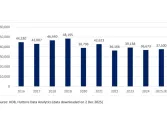
Myanmar quake shows urgent insurance need in Asia: Howden
Myanmar is considered to have a low insurance penetration rate.
Howden Re released a statement following the earthquake along the Sagaing Fault in Myanmar, one of the region’s most active fault systems.
Andy Souter, head of Asia Pacific at Howden Re, described the event as a major human tragedy and noted a significant protection gap, underscoring the need for more insurance capital in emerging markets.
The fault, stretching over 1,200 km, has experienced multiple major earthquakes, including M7.3+ events in 1931 and 1946. Studies suggest a seismic gap in the area, indicating potential for a M7.9 earthquake near today’s rupture site.
With the epicenter in Myanmar, the full extent of the damage remains unclear, though significant destruction is expected.
Myanmar has low insurance penetration, and many buildings in the affected areas are not resistant to earthquakes.
Whilst Thailand’s earthquake risk is considered low compared to typhoons and floods, models indicate such events are not unlikely.
In cities like Bangkok, where high-value properties are concentrated, losses can add up quickly. He noted that earthquake coverage in Thailand is typically included within overall property rates, with deductibles similar to fire peril policies.
Myrto Papaspiliou, head of International Catastrophe Model Research at Howden Re, highlighted that only 10 of Thailand’s 76 provinces, mainly in the northwest, are classified as earthquake risk zones.
However, Bangkok’s deep alluvial soil can amplify shaking from distant earthquakes, as seen in the 2014 Chiang Rai Earthquake and the 2004 Sumatra Earthquake.



















 Advertise
Advertise






